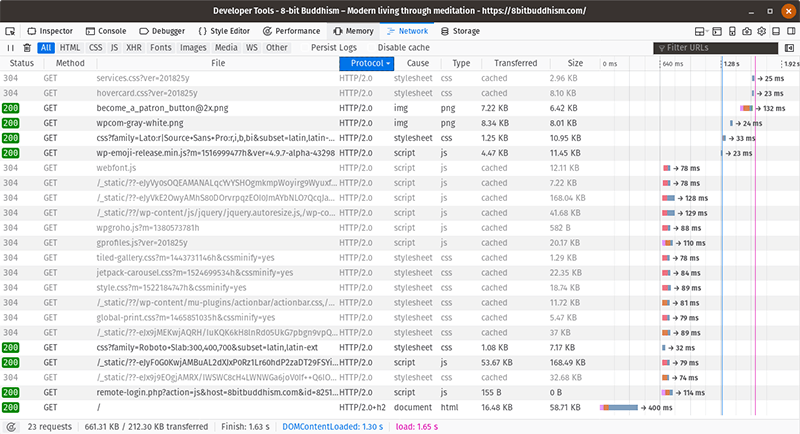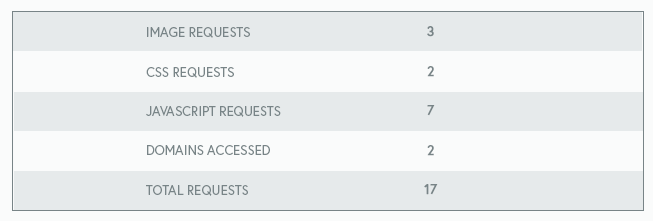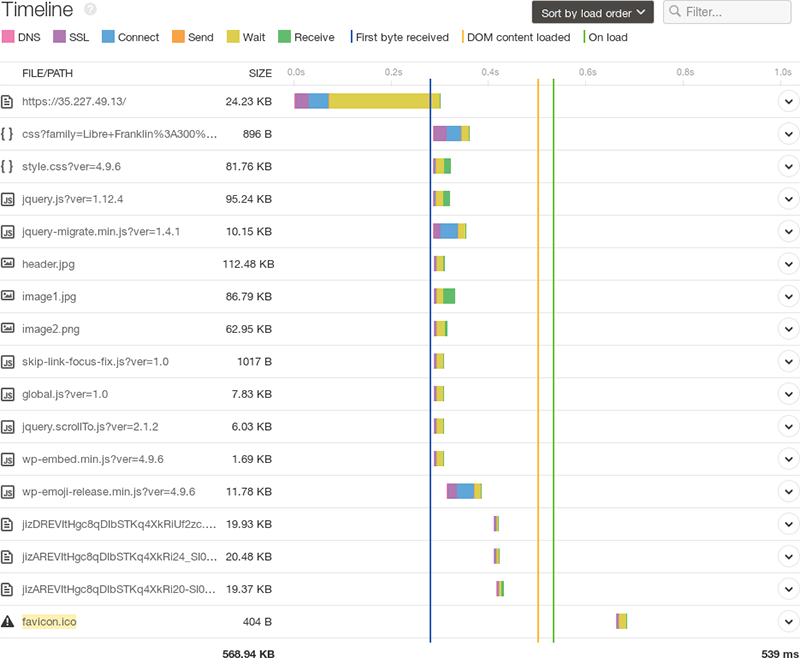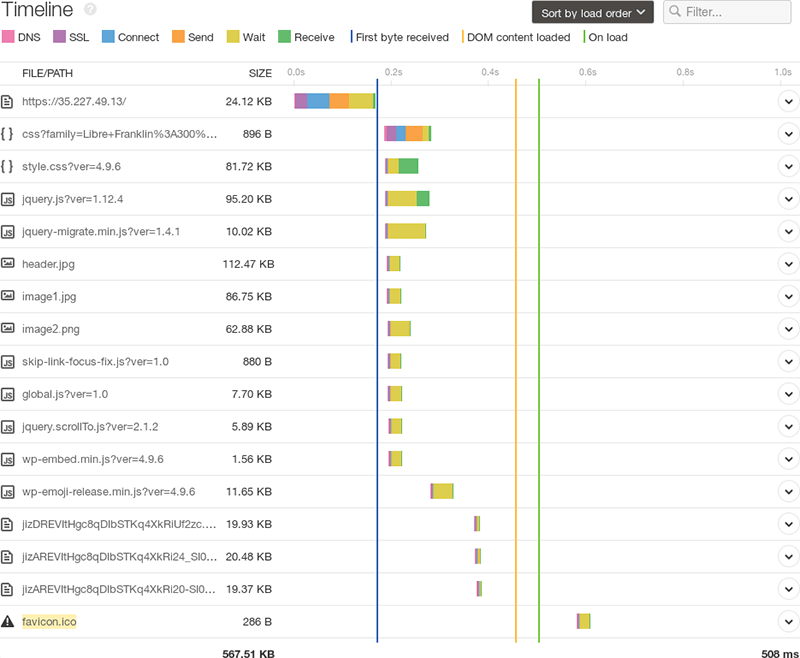Version 1.1 of the venerable HTTP protocol powered the web for 18 years.
Since then, websites have emerged from static, text-driven documents to interactive, media-rich applications. The fact that the underlying protocol remained unchanged throughout this time just goes to show how versatile and capable it is. But as the web grew bigger, its limitations became more obvious.
We needed a replacement, and we needed it soon.
Enter HTTP/2. Published in early 2015, HTTP/2 optimizes website connections without changing the existing application semantics. This means you can take advantage of HTTP/2’s features such as improved performance, updated error handling, reduced latency, and lower overhead without changing your web applications.
Today nearly 84% of modern browsers and 27% of all websites support HTTP/2, and those numbers are gradually increasing.
How is HTTP/2 Different from HTTP/1.1?
HTTP/2’s biggest changes impact the way data is formatted and transported between clients and servers.
Binary Data Format
HTTP/2 encapsulates data using a binary protocol. With HTTP/1.1, messages are transmitted in plaintext. This makes requests and responses easy to format and even read using a packet analysis tool, but results in increased size due to unnecessary whitespace and inefficient compression.
The benefit of a binary protocol is it allows for more compact, more easily compressible, and less error-prone transmissions.
Persistent TCP Connections
In early versions of HTTP, a new TCP connection had to be created for each request and response. HTTP/1.1 introduced persistent connections, allowing multiple requests and responses over a single connection. The problem was that messages were exchanged sequentially, with web servers refusing to accept new requests until previous requests were fulfilled.
HTTP/2 simplifies this by allowing for multiple simultaneous downloads over a single TCP connection. After a connection is established, clients can send new requests while receiving responses to earlier requests. Not only does this reduce the latency in establishing new connections, but servers no longer need to maintain multiple connections to the same clients.
Multiplexing
Persistent TCP connections paved the way for multiplexed transfers. With HTTP/2, multiple resources can be transferred simultaneously. Clients no longer need to wait for earlier resources to finish downloading before the next one begins. Website developers used workarounds such as domain sharding to “trick” browsers into opening multiple connections to a single host; however, this led to browsers opening multiple TCP connections. HTTP/2 makes this entire practice obsolete.
Header Compression and Reuse
In HTTP/1.1, headers are incompressible and repeated for each request. As the number of requests grows, so does the volume of duplicate header information. HTTP/2 eliminates redundant headers and compresses the remaining headers to drastically decrease the amount of data repeated during a session.
Server Push
Instead of waiting for clients to request resources, servers can now push resources. This allows websites to preemptively send content to users, minimizing wait times.
Does My Site Already Support HTTP/2?
Several major web servers and content delivery networks (CDNs) support HTTP/2. The fastest way to check if your website supports HTTP/2 is to navigate to the website in your browser and open Developer Tools. In Firefox and Chrome, press Ctrl-Shift-I or the F12 key and click the Network tab. Reload the page to populate the table with a list of responses. Right-click the column names in the table and enable the “Protocol” header. This column will show HTTP/2.0 in Firefox or h2 in Chrome if HTTP/2 is supported, or HTTP/1.1 if it’s not.

Alternatively, KeyCDN provides a web-based HTTP/2 test tool. Enter the URL of the website you want to test, and the tool will report back on whether it supports HTTP/2.
How Do I Enable HTTP/2 on Nginx?
As of version 1.9.5, Nginx fully supports HTTP/2 via the ngx_http_v2 module. This module comes included in the pre-built packages for Linux and Windows. When building Nginx from source, you will need to enable this module by adding –with-http_v2_module as a configuration parameter.
You can enable HTTP/2 for individual server blocks. To do so, add http2 to the listen directive. For example, a simple Nginx configuration would look like this:
# nginx.conf
server {
listen 443 ssl http2;
server_name mywebsite.com;
root /var/www/html/mywebsite;
}
Although HTTP/2 was originally intended to require SSL, you can use it without SSL enabled. To apply the changes, reload the Nginx service using:
$ sudo service nginx reload
or by invoking the Nginx CLI using:
$ sudo /usr/sbin/nginx -s reload
Benchmarking HTTP/2
To measure the speed difference between HTTP/2 and HTTP/1.1, we ran a performance test on a WordPress site with and without HTTP/2 enabled. The site was hosted on a Google Compute Engine instance with 1 virtual CPU and 1.7 GB of memory. We installed WordPress 4.9.6 in Ubuntu 16.04.4 using PHP 7.0.30, MySQL 5.7.22, and Nginx 1.10.3.
To perform the test, we created a recurring page speed check in Pingdom® to contact the site every 30 minutes. After four measurements, we restarted the Nginx server with HTTP/2 enabled and repeated the process. We then dropped the first measurement for each test (to allow Nginx to warm up), averaged the results, and took a screenshot of the final test’s Timeline.

The metrics we measured were:
- Page size: the total combined size of all downloaded resources.
- Load time: the time until the page finished loading completely.
Results Using HTTP/1.1


Results Using HTTP/2


And the Winner Is…
With just a simple change to the server configuration, the website performs noticeably better over HTTP/2 than HTTP/1.1. The page load time dropped by over 13% thanks to fewer TCP connections, resulting in a lower time to first byte. As a result of only using two TCP connections instead of four, we also reduced the time spent performing TLS handshakes. There was also a minor drop in overall file size due to HTTP/2’s more efficient binary data format.
Conclusion
HTTP/2 is already proving to be a worthy successor to HTTP/1.1. A large number of projects have implemented it and, with the exception of Opera Mini and UC for Android, mainstream browsers already support it. Whether it can handle the next 18 years of web evolution has yet to be seen, but for now, it’s given the web a much-needed performance boost.
You can try this same test on your own website using the Pingdom page speed check. Running the page speed check will show you the size and load time of every element. With this data you can tune and optimize your website, and track changes over time.
























